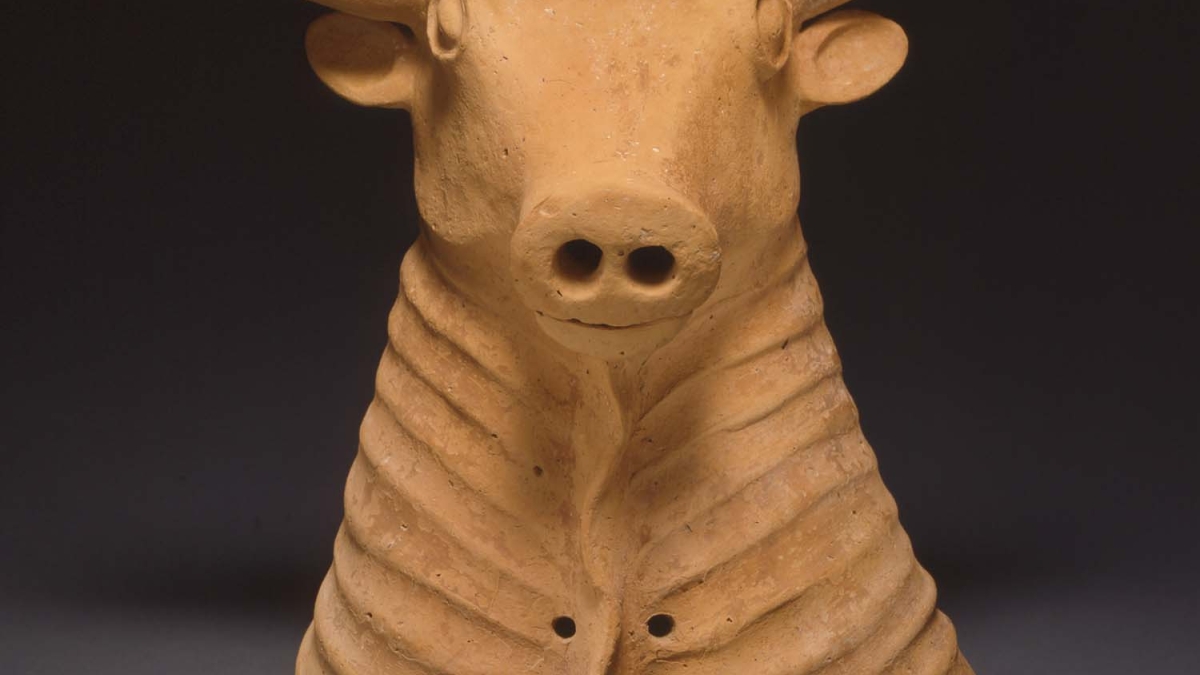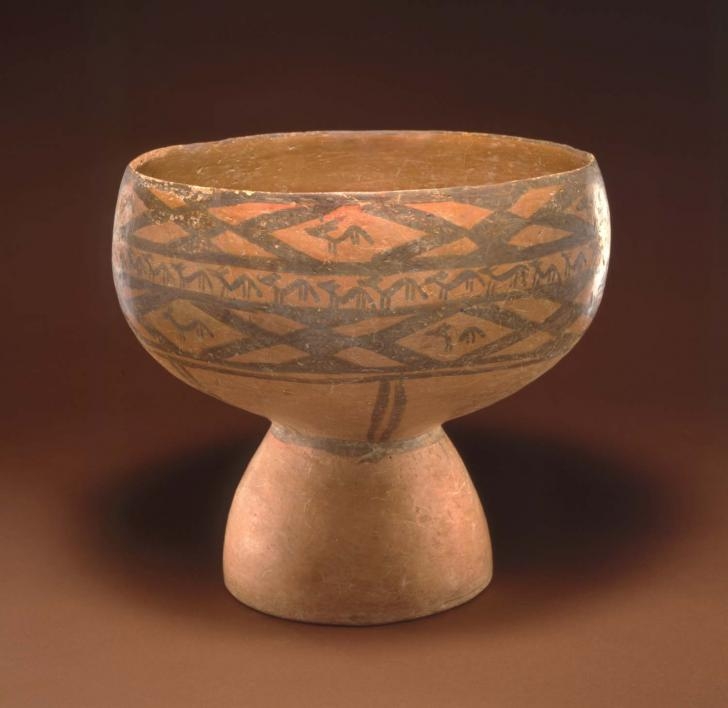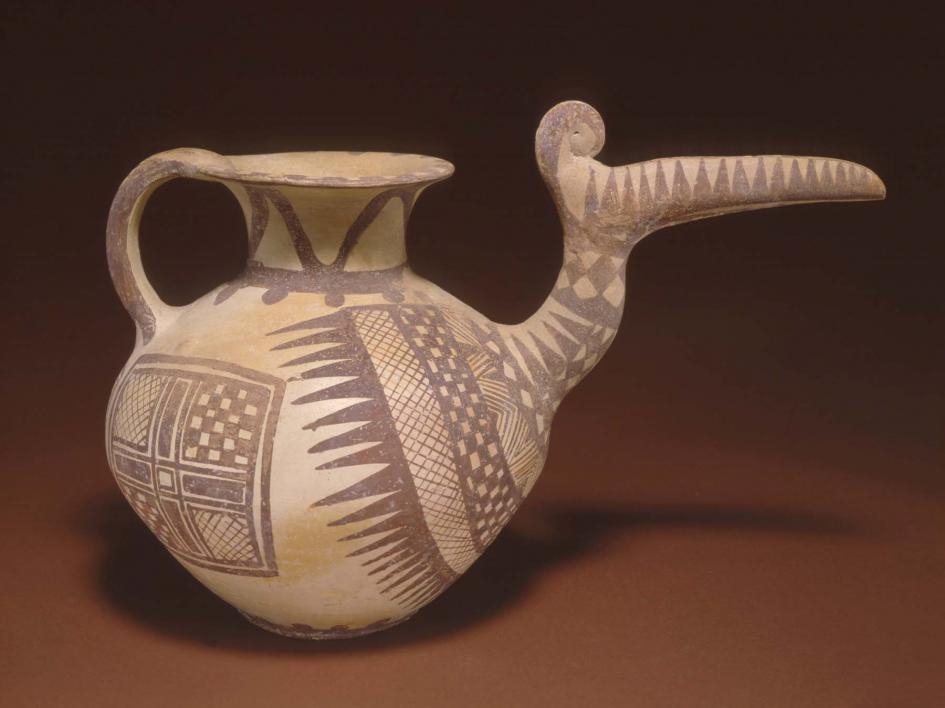Wit and Wine features ancient Iranian ceramics at ASU Art Museum

Acc. no. 82.4.2 (Exhibit no. 1)
Spouted bull vessel
Northern Iran, Gilan province
1200-800 BCE
Photo courtesy of Herberger Institute for Design and the Arts
TEMPE, Ariz. – It’s all about the water…or perhaps the wine. It may sound like a present-day Arizona focus, but actually it’s a 5,000-year-old one in another arid part of the world.
This fall the ASU Art Museum Ceramics Research Center will exhibit 45 ancient Islamic pieces devoted to holding, pouring or drinking liquids. It’s all part of Wit and Wine: A New Look at Ancient Iranian Ceramics, running Oct. 16, 2004 –Jan. 8, 2005, and it’s the first time such a collection has toured the U.S. in more than a decade.
“Ancient Iranian ceramic work is not as well known as Pre-Columbian, Chinese or Greek achievements, but it is equally rich and technically sophisticated,” says Peter Held, ASU Art Museum curator of ceramics.
“And there is a great thread of humor running through the pieces,” Held said.
Wit and Wine, organized by the Arthur M. Sackler Foundation, explores how ancient Iranian potters made and decorated these vessels with high-quality craftsmanship and design, as well as a unique sense of humor. Some of the pieces were created to serve specific functions, such as cosmetic containers or to drink wine, while others are purely sculptural forms.
Many of the jugs, jars, and beakers are shaped like animals or are painted with animal motifs. Interpretations of both wild and domesticated animals show elegant deer, powerful rams and amusing goats. Included in the exhibition are any extraordinary ceramic head and neck of a bull, a vessel in the form of a seated camel, a drinking horn with a goat head handle, a vessel with a deer’s head spout, a vessel in the form of a stag, a spouted vessel in the shape of a bull and a delightful vessel with two feet.
The public reception will be held on Oct. 22 from 7-9 p.m., with a gallery talk by Trudy Kawami at 7:30 p.m. A members’ preview will be on Oct. 22 from 6 -7 p.m.
“The CRC is extremely pleased in presenting this exhibition of historic Iranian ceramics as it showcases the finest examples from this culture and provides a connection to pottery traditions worldwide.",” said Peter Held, the ASU Art Museum’s curator of ceramics.
A research psychiatrist, medical publisher and connoisseur and collector of art, Arthur M. Sackler, M.D. (1913-1987), established the Arthur M. Sackler Foundation in 1965 to make his extension art collections accessible to the public. Director of Research for the Arthur M. Sackler Foundation, Trudy S. Kawami, received her Ph.D in art history and archaeology from Columbia University, where she specialized in ancient art of Western Asia. Throughout her career, she has carried out research in Turkey, Iran, Israel as well as major European museums. The author of two books and numerous articles, Dr. Kawami lectures frequently, and currently teaches a course on the art of ancient Near East at the School of Visual Arts in New York City.
The ASU Art Museum is a division of The Katherine K. Herberger College of Fine Arts. The museum’s Ceramics Research Center is located on the northeast corner of Mill Avenue and 10th Street, Tempe. Hours are 10 a.m. – 9 p.m. on Tuesdays (during the academic year), and 10 a.m. – 5 p.m. Wednesday through Saturday. For more information, members of the public should call the ASU Art Museum at (480) 965-2787.
The ASU Art Museum was named “the single most impressive venue for contemporary art in Arizona” by “Art in America.” It is a division of the Herberger College of Fine Arts at Arizona State University. To learn more about the museum, visit http://asuartmuseum.asu.edu
Media Contact:
Mica Matsoff
(480) 965-0478
Mica.Matsoff@asu.edu

